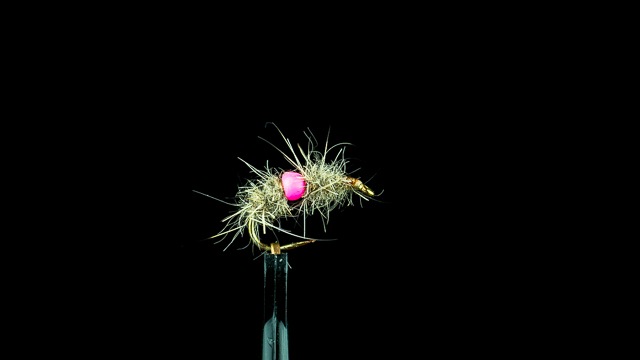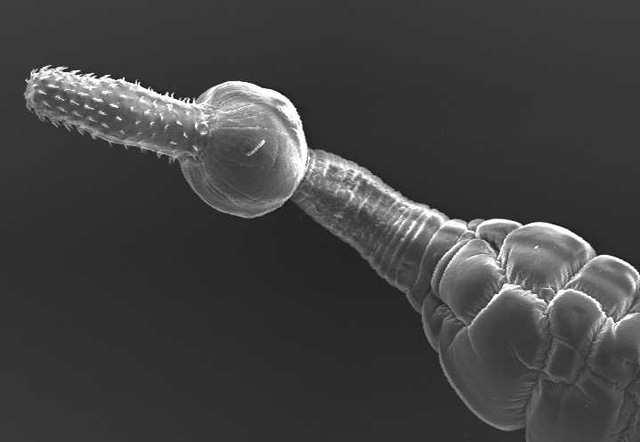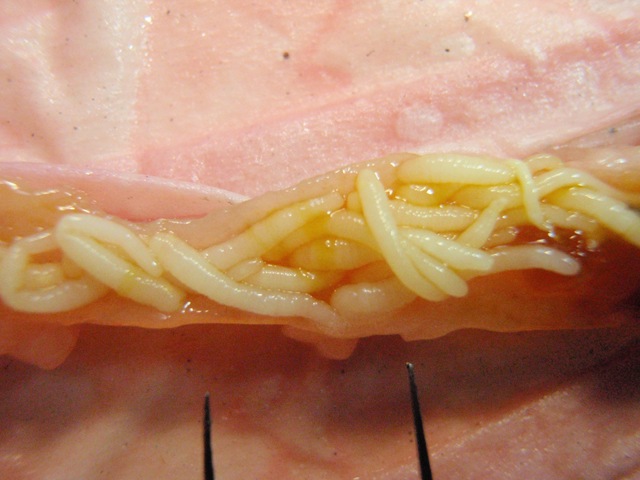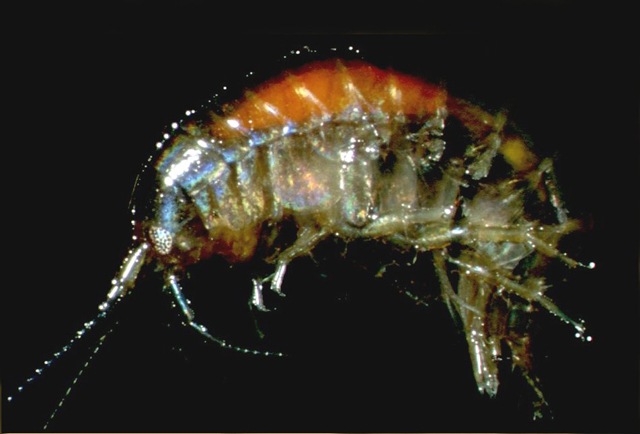Fly-tying isn’t only about sex and death – but some of the time it definitely IS about those things… If you’re up to the “biological triggers in fly-fishing” section of the free email tutorials, then I think you’ll like this one. It slots right in as one of those lessons.

You might have heard me say that fly fishing sits right on the border where art and biology meet – because I think that this is both true and a really useful way to view it. The creative and skillful parts of fly tying and fly presentation are very much an art-form – and even the creative thinking to come up with good ideas for tactics to try have an artistic base. At the same time, the testing, learning and development of tactics on-stream are pure experimental biology. The design of our fly and the way we make it dance are the triggers that hot-wire the fish’s visual predatory system. Fly fishers “hack” biology…
And biology is weird.
One of the strangest stories is the one that sits behind the success of the old “hot-spot shrimp” pattern (and probably a great many similar patterns too). Of course, it is fairly obvious that hot-spots of any kind in an artificial fly pattern will tend to make it easily noticed by fish (and there’s more on that later). But you might be surprised to learn how a parasitic “hook-headed” worm that lives in the guts of many fish species invented the same trick LONG before any fly-tier got round to it (hook head worm photos courtesy of Shaun Leonard of the Wild Trout Trust – from his fish pathology work…)

In fact, this simple parasite went much further than that, it became a puppet master for the shrimp that fish love to eat…
You see, hook-headed worms don’t just have one host (the fish); they also need another host that they use to “leapfrog” from the egg stage and get into their cosy dream home inside the gut of an unsuspecting fish. That intermediate host is a freshwater shrimp, and it is not exactly a willing partner in the deal. It starts with worms releasing eggs from the guts of the fish (nice!), where they sink…

After accidentally swallowing the tiny eggs of the worm, the shrimp becomes a temporary “taxi” for the parasitic hookworm larva that hatches out inside the shrimp. Now a very obvious effect that the growing larva has on the shrimp is the bright orange blob that it appears inside the transparent shrimp’s body! It is no surprise to hear that this makes the poor old shrimp tend to stand out a wee bit from the drab background of the stream-bed and also from all its shrimpy friends….but the hookworm larva isn’t satisfied with that.

Instead it goes one further and turns the shrimp into a kind of zombie puppet – somehow it changes the shrimp’s normal behaviour in an incredible way. Experimental work has found that infested shrimp will actually move TOWARDS the scent of a predatory fish (whereas non-infested shrimp flee away from that scent for obvious reasons). So the shrimp gets a double whammy – first it becomes MUCH easier to see and then it is tricked into swimming towards a predatory fish whenever one happens to swim close by…
Unsurprisingly, this makes that poor shrimp much more likely to be gobbled up and the sneaky hookworm gets to transform into its adult form and settle in to its favourite home inside the fish.
Now, you might think that it would make sense for the fish to develop a habit of avoiding those orange-spot shrimps; but host/parasite relationships are often really complicated. It is possible, for example, that the hookworms do not have a very strong negative effect on the health of the fish. Now, I don’t know in this case, but it is even possible for what you might assume are “parasites” to actually have a beneficial effect on its host. That is, obviously, not true for the “middle-man” shrimp host of course…
Consider this factoid that I heard on the radio recently (from a proper parasite biology scientist I must add!); Imagine you were able to separate out all the cells in an average human body into “human body” cells and “cells that belong to other things such as parasites and stuff”…Well, if you did that, there would only be enough purely “human” cells to make up one of your legs…below the knee! All the rest of the cells would not be human at all!! Of course, because all these cells are mixed up in and around our body, the whole human shape seems to be made up of “human” cells…I told you biology was weird…

If the hookworms don’t necessarily cause too much harm to the fish hosts, then there isn’t much of a reason to develop strong defences against eating infested shrimp. Plus, the whole thing is probably complicated by the orange pigment itself often signifying the presence of valuable nutrients (such as carotenes). Avoiding orange food would, for instance, mean that fish missed out on the protein-packed meals of alevin (baby fish with their yolk-sacs still attached) and trout eggs among other things.

So here are three things from this biology lesson that you need to know for your fly tying and your presentation skills:
- There is definite scope for catching more fish by sometimes making your fly stand out from the crowd – a concept that I’ve called “anti-camouflage” for short (I got tired of writing “stand out from the crowd” when writing books about the subject)
- That “lack of predator avoidance” behaviour in the natural shrimp (when it is being manipulated by the parasite) is something that you can mimic when you present your flies – in fact you do it without realising it when you deliberately cast a fly at a fish!
- The fact that certain strong colours – over and above just “anti-camouflage” can actually trigger hard-wired responses to feed (for instance, when orange pigments are an honest indication of the presence of certain nutrients)
Now this last point is really interesting, as it leads us to the idea that an unnaturally strong stimulus can, sometimes, produce an unnaturally strong feeding response…and this could be what is being exploited by the really crazy/unnatural colours in some very successful nymph patterns…
But that is a story for another time…

Interesting….gives me some ideas for flys to design and fish!
Thanks!
I am definitely going orange…… I can see "The Dickinson's Real Deal" emerging from the vice.
I have to admit it is also particularly effective for grayling around trout spawning time (for obvious reasons…)